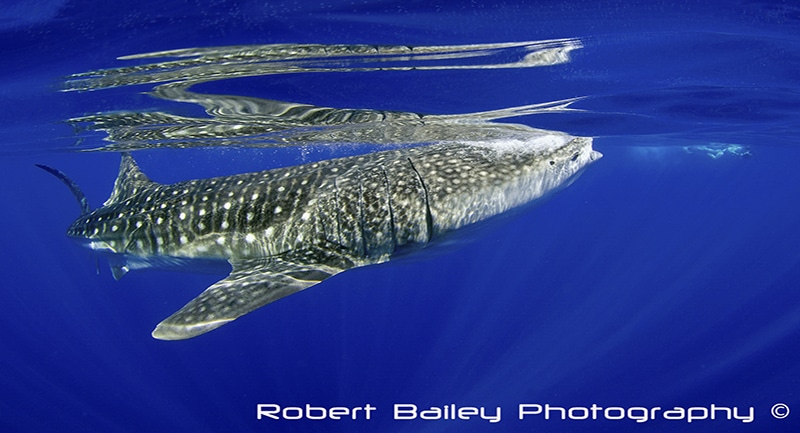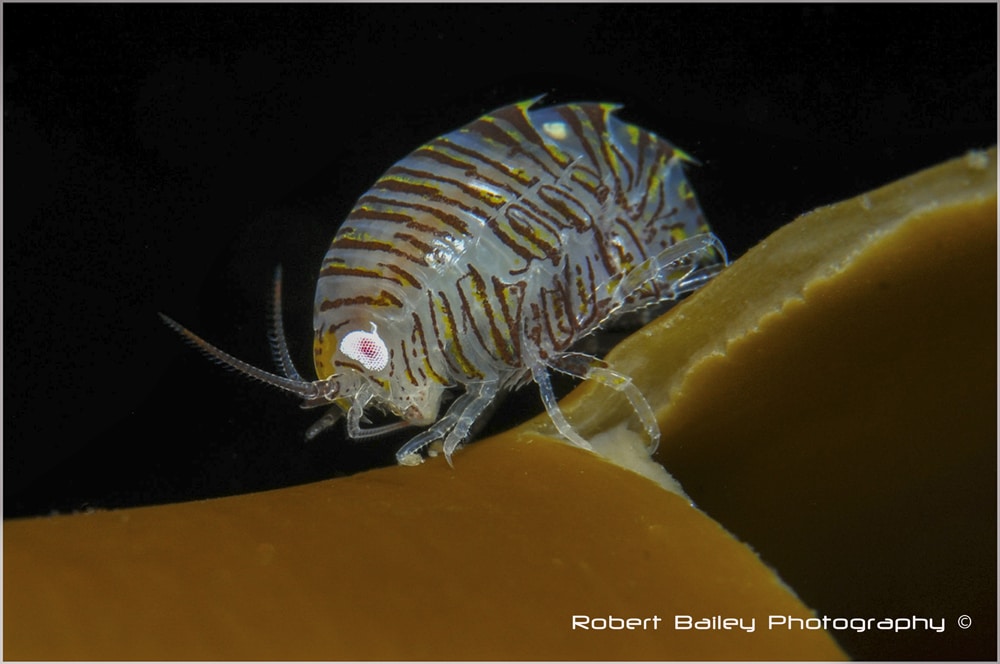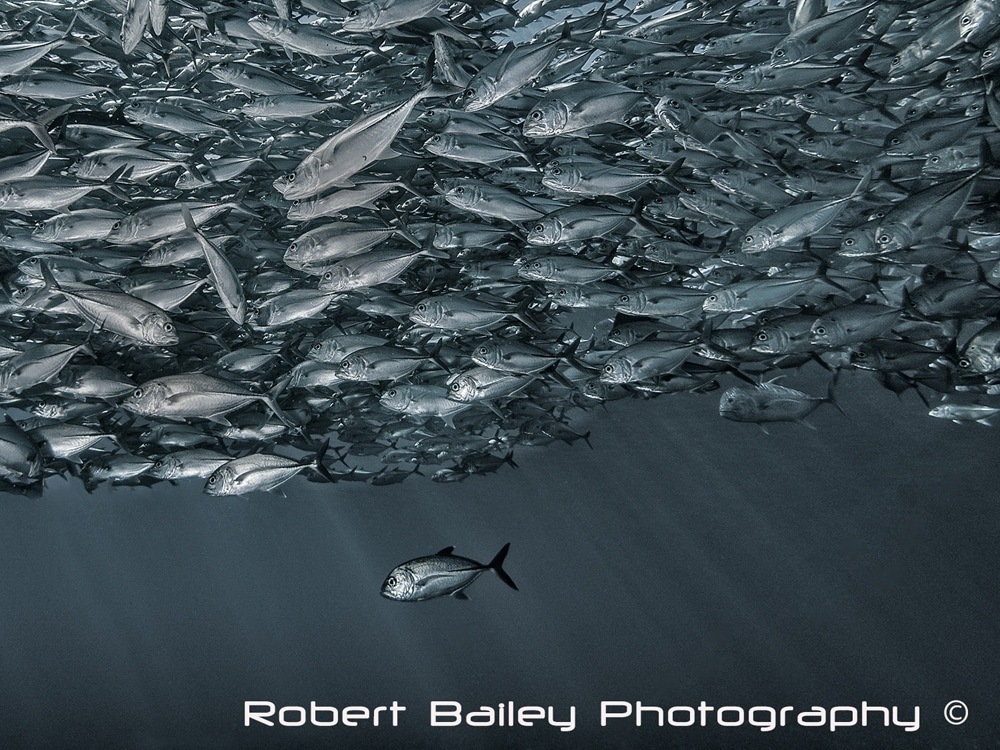News
Scubaverse Underwater Photographer Interview: Robert Bailey

In an ongoing series, Scubaverse’s Underwater Photography Editor Nick Robertson-Brown talks to underwater photographers from around the world that he admires. In this blog: Robert Bailey.
 I grew up in the era of Jacque Cousteau. Those documentaries were ground breaking, they were adventurous, and they were unlocking the mysteries of the sea. Those explorations still fuel my inspiration today. In Costa Rica, in the late 80s, I hired a mask and snorkel, floundered into the sea, and didn’t come out for 3 hours. I was completely hooked. That feeling is still with me nearly 30 years on. I got certified as a diver after that trip, and decided I wanted to teach. I trained to become an instructor in the US. I worked at the University of Calgary for 6 years training up to instructor level, staffed three full-time Instructor Training Courses over the years, and taught both dive rescue and Ice diving as specialities.
I grew up in the era of Jacque Cousteau. Those documentaries were ground breaking, they were adventurous, and they were unlocking the mysteries of the sea. Those explorations still fuel my inspiration today. In Costa Rica, in the late 80s, I hired a mask and snorkel, floundered into the sea, and didn’t come out for 3 hours. I was completely hooked. That feeling is still with me nearly 30 years on. I got certified as a diver after that trip, and decided I wanted to teach. I trained to become an instructor in the US. I worked at the University of Calgary for 6 years training up to instructor level, staffed three full-time Instructor Training Courses over the years, and taught both dive rescue and Ice diving as specialities.
Being a dual citizen made the move from Canada to Europe in the late 90s an easy one, and after six years in the Netherlands I moved to the UK and have been based in the Midlands since 2005. I joined BSOUP at that time, and BUPG a little later. Entering competitions and being surrounded by accomplished photographers established the benchmark for what makes a winning image. As a result of competing my images have been published in the London Times, Sunday Times Magazine, Outdoor Photographer, Dive, Scuba, and other publications. Winning sponsorship to compete for the UK in the Epson Red Sea competition in 2009, and placing in that prestigious event was a great achievement for me. I’ve accumulated a lot of other awards in UK club competitions and other events over the years. Although I’ve travelled frequently to warmer climes, I’m drawn to colder environments. I spend the majority of my time these days diving in the UK, and Canada as these locations are less photographed and less crowded than other areas. My website is www.RobertBaileyPhotography.com , established in 2007.
NRB: How did your underwater photography start?
RB: I’ve been interested in photography since an early age. Already being a topside shooter, using a camera underwater was a natural progression for me. My underwater photography started in the early 90’s as a way of augmenting scuba training materials for the program at the University of Calgary. After a while I found my interest in UW photography overtook my desire to teach. No longer content being a diver with a camera, I evolved into an underwater photographer obsessed with getting better pictures.
NRB: What is your favourite u/w camera equipment (past & present) & why?
RB: Like most photographers I love kit. As Martin Edge once said, ‘It’s sexy’. In the film days I started out with a Nikonos V with a 35 mm lens, which is all I could afford at the time. I had varied results using that setup, but was bitten by the bug, and kept working at it every chance I got. Eventually I saved up enough to buy a 15mm lens, which was unparalleled for quality at the time. This was great to use, and I was able to make pictures I couldn’t have previously, especially close focus wide angle. After a few years I realized the limitations of working with a range finder camera underwater and set my sights on getting a housed system. I owned an Nikon F4 at time, so worked to get that into a housing with a Sport Finder (a lovely- and not cheap – optical view finder) I was able to get pictures more easily, especially of quick moving tiny fish, which proved a great challenge for me using the Nikonos.
My favourite camera out of them all is the one I use now, the Nikon D500. it’s nice to be able to take advantage of the latest digital technology. The autofocus system, in my experience, is better than anything I’ve used previously underwater. Having immediate feedback underwater is much easier than working with film. My work horse wide angle lens is the Tokina 10-17 mm fisheye, which is renowned for its close focus ability. I still use an old style Nikkor 60mm Macro lens which has excellent optics. I’ve used various brands of strobes over the years, but settled on Inon strobes which I’ve found to be hugely reliable, and easy to use. My Z240s are my go-to lights, and I use two S2000’s for off camera work. The Nauticam Super Macro Convertor (SMC) is a fantastic tool for unlocking the tiny marine life world not immediately apparent to the naked eye. When I dive with this, I feel like a kid looking at the underworld world through a microscope. I like kit that’s reliable, and built to last.
NRB: What would be your advice to anyone new to underwater photography?
RB: Revisit the fundamentals. Ensure your dive equipment is in order. Confirm you’re correctly weighted for conditions. Achieving neutral buoyancy in my opinion is key to good photography underwater, and more importantly preserving the underwater environment, and conditions for other photographers who may be around you. You’d be surprised how often this is overlooked. Get in the water as much as you can, and always dive with a camera. Creating opportunities underwater is more important than the equipment you don’t have. Fully exploit the equipment you do have. Join an underwater photography club, submit images to competitions, and solicit as much feedback as possible about what you can do to improve. There’s a lot of talent around these days, many photographers are generous with their knowledge and love to wax lyrical about their experiences. Join trips with other underwater photographers. These trips are often setup by clubs to maximize photographic opportunities. Read and research. There are a lot of good books around, and I highly recommend the latest books from Alex Mustard and Martin Edge. Read these cover to cover. The internet also contains a wealth of knowledge. Table top experimentation can be massively helpful in familiarizing you with your equipment. When your diving, set your equipment up on the surface for what your trying to achieve. Minimize adjustments underwater where possible. Having a plan and being deliberate has helped me over the years.
NRB: What, or who, has been your single biggest inspiration for your underwater photography?
RB: I think when I first got into it, I was hugely inspired by the work of David Doubilet. His underwater stories in National Geographic were only available though the post, so those articles were like gold when they arrived. Doubilet’s book Water Light Time is still a favourite of mine, and now a well worn tome. In more recent years Alex Mustard, Flip Nicklin, and Thomas Peschak are a few of the underwater photographers I really admire. There’s so much talent out there these days. Starting to place and win competitions certainly has fuelled my passion in the past, and trying to stay in the top set of local photographers keeps me coming back today.
NRB: What image are you most proud of and why?
RB: Without hesitation a picture I made of a whale shark whilst on a live aboard in Egypt. Quite early one morning in the Gulf of Suez on mirror calm seas the skipper killed the engine. From our cabin I could hear a lot of chatter on deck, and went up to see what was going on. To my amazement four whale sharks were going about their business. We jumped in the rib and did some snorkelling with these gentle giants. Amidst the excitement I got the cox to take me back to the boat, and I did the fastest lens change in history and jumped back in equipped with a wide angle lens. I managed to make a few pictures complete with surface reflections. Having only seen Basking Sharks in the UK for the first time the week before, I quite excited by the whole affair. I still look at these pictures and remind myself I was there.
NRB: Where is your favourite dive location, and is it for the photography?
RB: It’s hard to settle on just one place. I’ve been fortunate to travel a lot during my diving career. The diving and topside experience off northern Vancouver Island in Canada has been remarkable over the years, and tops my list. The marine life there is prolific and many of the subjects are less photographed than those in the tropics. Being surrounded underwater by dozens of Pacific white sided dolphins ranks high on my list of underwater experiences. There are no crowds to speak of, the topside wildlife is abundant. Over the last few years we’ve run trips where we’ve seen coastal wolves, California sea otters, bald eagles, coastal deer, black bears, humpback whales, and orcas to name a few. I think Queen Charlotte Strait and Slingsby Channel would rival any topside safari. It’s home for me, and a lot of my formative experiences as a diver and photographer took place there.
NRB: What are you views on marine life manipulation, moving subjects?
RB: I do my utmost to respect the creatures I photograph, and not interfere with any marine life. I leave subjects alone that are inaccessible with a camera. I think humanity needs to be more courteous to the other inhabitants we share our planet with. Jeopardizing life for the sake of a photograph is not acceptable practice to me.
NRB: What do you look for when you are making your images?
RB: Clean, uncluttered backgrounds. Colour. High Contrast. Anthropomorphism
 NRB: What motivates you to take u/w photos?
NRB: What motivates you to take u/w photos?
RB: My love of nature, photography, diving, being outdoors, and the great friends and family I’ve shared my experiences with.
NRB: If you could photograph any one thing/place what or where would that be?
RB: A blue whale is my ultimate dream. and I’d like to photograph it in a remote area, maybe in a polar region. Having said that I’d settle on being in the water anywhere, with any whale. I’ve seen a lot whales on the surface, and have been close enough to Orcas to smell their breath. I’m in awe of whales, and would love the experience of being close to them underwater.
Find out more about Robert Bailey by clicking here.
Gear News
Introducing the TR-80, IR-50 and CS-30 Regulators from DYNAMICNORD

Whether you are a beginner or a professional diver – with the three new main regulators from DYNAMICNORD, everyone will find their favourite regulator. They all look super stylish.
Excellent performance with the TR-80
Quality and performance are the be-all and end-all for regulators. It is not for nothing that the TR stands for Tec Reg. The innovative design of the TR-80 guarantees absolute reliability – even in ice-cold waters.

Perfect breathing effort at 0.8 J/l / certified for diving in waters below 10 degrees / structural design made of solid brass for best cold protection / membrane-compensated design with dry seal of the first stage / reduced exhalation effort thanks to optimized exhalation membrane and bubble deflector / adjustable Venturi (dive/predive) and adjustment knob for individual inhalation comfort / innovative design of the front cover prevents free-flow in strong currents or when diving with scooters / design made of sandblasted brass, matt chrome finish / 2 HP and 4 LP outlets / mouthpiece made of high-quality, anti-allergic silicone for maximum comfort.


Amazing underwater adventures with the IR-50
The IR-50 is the top regulator for advanced and experienced divers. Natural breathing is the essence of this regulator.

Ideal breathing effort at 0.8 J/l /certified for diving in waters below 10 degrees / compensated membrane / adjustable venturi (dive/predive) and adjustment knob for individual inhalation comfort/ outlet valve and deflector for minimum exhalation effort and reduction of bubbles on the face / design made of sandblasted brass, matt chrome finish / 2 HP and 4 NP outlets / mouthpiece made of high-quality, anti-allergic silicone for maximum comfort.


The Workhorse – our CS-30
For diving centres and diving beginners – the workhorse stands for strong construction, reliability and robustness. Perfect for your training.

Optimal breathing effort at 0.8 J/l /recommended for diving in waters above 10 degrees / non-compensated piston / adjustable venturi (dive/predive) / outlet valve and deflector for minimum exhalation effort and reduction of bubbles on the face / design made of sandblasted brass, matt chrome finish / 1 HP and 3 NP outlets / mouthpiece made of high-quality, anti-allergic silicone for maximum comfort.


Octopus OP-30
The OP-30 is the ideal addition to all DYNAMICNORD regulators. It is identical in construction to the CS-30.

The TR-80, IR-50, CS-30 (DIN & INT) regulators and the Octopus OP-30 are available from DYNAMICNORD dealers and in the online store.
DYNAMICNORD – Your Outdoor Companion.
Marine Life & Conservation
Paul Watson Released as Denmark Blocks Japan’s Extradition Bid

Renowned anti-whaling activist Paul Watson has been released from custody in Greenland after spending five months in detention. Denmark’s Justice Ministry rejected Japan’s request for his extradition, citing insufficient guarantees that his time already served in custody would be credited against any potential sentence.
The 74-year-old Canadian-American was arrested on July 21 in Nuuk, Greenland’s capital, when his ship docked to refuel. His arrest was based on a 2012 Japanese warrant related to a 2010 encounter in Antarctic waters. Japan alleged Watson obstructed operations and caused damage to a whaling research ship during efforts to disrupt illegal whaling. Watson has consistently denied these claims, maintaining his commitment to marine conservation.
Denmark, which oversees extradition matters for Greenland, concluded that while the legal conditions for extradition were met, the lack of assurances from Japan regarding time-served credit made extradition untenable.
In a video shared by his foundation, Watson expressed gratitude and relief, saying, “After five months, it’s good to be out… and good to know they’re not sending me to Japan.” He added that the most difficult part of his time in custody was being separated from his two young sons.
Watson is a pioneering figure in marine conservation, known for founding the Captain Paul Watson Foundation in 2022 after decades of activism with the Sea Shepherd Conservation Society. His bold efforts to defend marine life have earned him widespread support, including from celebrities and conservationists. His work has also been featured in the acclaimed reality TV series Whale Wars.
Watson’s lawyer, Jonas Christoffersen, praised the decision, stating, “We are happy and relieved that Paul Watson is now free.” He added that Watson is eager to reunite with his family and continue his vital work.
The arrest occurred while Watson’s vessel, the M/Y John Paul DeJoria, was en route to the North Pacific with a team of 26 volunteers to intercept a Japanese whaling ship. His foundation described the arrest as politically motivated and emphasized that Watson’s actions were focused on ending illegal whaling practices.
Japan resumed commercial whaling in 2019 after leaving the International Whaling Commission, asserting that whale meat is a cultural tradition. Conservationists, however, continue to challenge these practices, highlighting their impact on marine ecosystems.
Despite the challenges, Watson remains steadfast in his mission to protect marine life and bring attention to whaling practices. His dedication to ocean conservation has made him a globally respected advocate for the environment.
-

 News2 months ago
News2 months agoIconic SS United States to become the World’s Largest Artificial Reef
-

 News3 months ago
News3 months agoBook Review – 52 Assignments: Underwater Photography
-

 Gear News3 months ago
Gear News3 months agoDYNAMICNORD – New German diving brand enters the British market
-

 News3 months ago
News3 months agoExploring Cenote El Pit: A Diver’s Dream
-

 Gear News3 months ago
Gear News3 months agoTry BARE drysuits (and maybe even win one!) this Friday with Sea & Sea at North West Dive Fest
-

 Marine Life & Conservation3 months ago
Marine Life & Conservation3 months agoBook Review: Coral Triangle Cameos
-

 Blogs3 months ago
Blogs3 months agoDive the Egyptian Red Sea this Autumn with Regaldive
-

 News3 months ago
News3 months ago2024 Ocean Art Underwater Photo Competition Announced

















